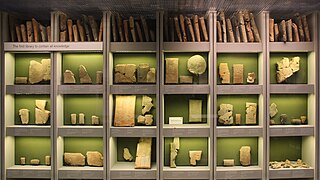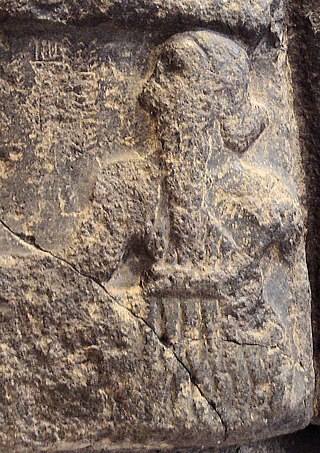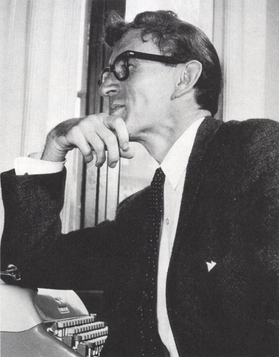Related Research Articles

Sippar was an ancient Near Eastern Sumerian and later Babylonian city on the east bank of the Euphrates river. Its tell is located at the site of modern Tell Abu Habbah near Yusufiyah in Iraq's Baghdad Governorate, some 69 km (43 mi) north of Babylon and 30 km (19 mi) southwest of Baghdad. The city's ancient name, Sippar, could also refer to its sister city, Sippar-Amnanum ; a more specific designation for the city here referred to as Sippar was Sippar-Yahrurum.

Lama, Lamma, or Lamassu is an Assyrian protective deity.

Aššur (; Sumerian: 𒀭𒊹𒆠 AN.ŠAR2KI, Assyrian cuneiform: Aš-šurKI, "City of God Aššur"; Syriac: ܐܫܘܪ Āšūr; Old Persian 𐎠𐎰𐎢𐎼Aθur, Persian: آشور: Āšūr; Hebrew: אַשּׁוּר, ʾAššūr, Arabic: اشور), also known as Ashur and Qal'at Sherqat, was the capital of the Old Assyrian city-state (2025–1364 BC), the Middle Assyrian Empire (1363–912 BC), and for a time, of the Neo-Assyrian Empire (911–609 BC). The remains of the city lie on the western bank of the Tigris River, north of the confluence with its tributary, the Little Zab, in what is now Iraq, more precisely in the al-Shirqat District of the Saladin Governorate.

The Royal Library of Ashurbanipal, named after Ashurbanipal, the last great king of the Assyrian Empire, is a collection of more than 30,000 clay tablets and fragments containing texts of all kinds from the 7th century BC, including texts in various languages. Among its holdings was the famous Epic of Gilgamesh.

Burna-Buriaš II, rendered in cuneiform as Bur-na- or Bur-ra-Bu-ri-ia-aš in royal inscriptions and letters, and meaning servant or protégé of the Lord of the lands in the Kassite language, where Buriaš is a Kassite storm god possibly corresponding to the Greek Boreas, was a king in the Kassite dynasty of Babylon, in a kingdom contemporarily called Karduniaš, ruling ca. 1359–1333 BC, where the Short and Middle chronologies have converged. Recorded as the 19th King to ascend the Kassite throne, he succeeded Kadašman-Enlil I, who was likely his father, and ruled for 27 years. He was a contemporary of the Egyptian Pharaohs Amenhotep III and Akhenaten. The proverb "the time of checking the books is the shepherds' ordeal" was attributed to him in a letter to the later king Esarhaddon from his agent Mar-Issar.
Alan Ralph Millard is Rankin Professor Emeritus of Hebrew and Ancient Semitic languages, and Honorary Senior Fellow, at the School of Archaeology, Classics and Egyptology (SACE) in the University of Liverpool.
Henry William Frederick Saggs was an English classicist and orientalist.

Soran or Diyana is a city in Erbil Governorate, and the capital of Soran District in Kurdistan Region, Iraq. Soran is one of the largest cities in Kurdistan Region with a population of about 125,000 people.

The Department of the Middle East, numbering some 330,000 works, forms a significant part of the collections of the British Museum, and the world's largest collection of Mesopotamian antiquities outside Iraq. The collections represent the civilisations of the ancient Near East and its adjacent areas.
Kuara is an archaeological site in Dhi Qar Province (Iraq). According to the Sumerian King List, Kuara was also the home of Dumuzid, the fisherman, the legendary third king of Uruk. The city's patron deity was Meslamtaea (Nergal). In Sumerian mythology, Kuara was also considered the birthplace of the god Marduk (Asarluhi), Enki's son. The cults of Marduk and Ninehama were centered in Kuara.
Tell al-Rimah is a tell, or archaeological settlement mound, in Nineveh Province (Iraq). Its ancient name may have been either Karana or Qattara. It is located in Nineveh Province (Iraq), roughly 80 kilometres (50 mi) west of Mosul and ancient Nineveh in the Sinjar region.

Sargon of Akkad, also known as Sargon the Great, was the first ruler of the Akkadian Empire, known for his conquests of the Sumerian city-states in the 24th to 23rd centuries BC. He is sometimes identified as the first person in recorded history to rule over an empire.
Me-Turan is an archaeological site in Diyala Governorate Iraq comprising the modern Tell Haddad and the two mounds of Tell al-Sib. In Neo-Assyrian times it was known as Me-Turnat. It was excavated as part of the Hamrin Dam salvage project.
Kadašman-Ḫarbe I, inscribed in cuneiform contemporarily as Ka-da-áš-ma-an-Ḫar-be and meaning “he believes in Ḫarbe ,” was the 16th King of the Kassite or 3rd dynasty of Babylon, and the kingdom contemporarily known as Kar-Duniaš, during the late 15th to early 14th century, BC. It is now considered possible that he was the contemporary of Tepti Ahar, King of Elam, as preserved in a tablet found at Haft Tepe in Iran. This is dated to the “year when the king expelled Kadašman-KUR.GAL,” thought by some historians to represent him although this identification has been contested. If this name is correctly assigned to him, it would imply previous occupation of, or suzerainty over, Elam.
The cuneiform lexical lists are a series of ancient Mesopotamian glossaries which preserve the semantics of Sumerograms, their phonetic value and their Akkadian or other language equivalents. They are the oldest literary texts from Mesopotamia and one of the most widespread genres in the ancient Near East. Wherever cuneiform tablets have been uncovered, inside Iraq or in the wider Middle East, these lists have been discovered.
Stephanie Mary Dalley FSA is a British Assyriologist and scholar of the Ancient Near East. She has retired as a teaching Fellow from the Oriental Institute, Oxford. She is known for her publications of cuneiform texts and her investigation into the Hanging Gardens of Babylon, and her proposal that it was situated in Nineveh, and constructed during Sennacherib's rule.
The term Puqudu or Piqudu refers to a prominent Aramean tribe and its associated region in southern or eastern Babylonia. They lived along the eastern edge of Elam and in the area near Uruk and the Tigris. Their tribal name is sometimes spelled with an accent mark as Puqūdu, and the members of the tribe are sometimes referred to as Puqūdian, Puqūdians, or Puqudaeans. Some older publications use Pukud.
Barbara, Lady Mallowan, was an English archaeologist, Assyriologist, and epigraphist who specialised in cylinder seals.

Jørgen Læssøe was a Danish Assyriologist and professor at the University of Copenhagen. He directed the Danish excavations at Tell Shemshara, uncovering an Old Assyrian palace complex and a substantial cache of cuneiform texts known as the Shemshara Archives, which became his main object of study. He also worked on inscriptions from Max Mallowan's excavations at Nimrud, served as the field director of the Scandinavian Joint Expedition to Sudanese Nubia, and published a number of popular history books on Assyriology in Danish, including his magnum opus, The People of Ancient Assyria (1963).
References
- ↑ Millard, Alan (2005). "Professor H. W. F. Saggs, BD, MTh, MA, PhD, FSA (1920-2005)". IRAQ. 67 (2): vi. doi: 10.1017/S0021088900001285 . S2CID 178152180.
- 1 2 3 Novotny, Jamie (2014). "[Rezension von] HWF Saggs, The Nimrud Letters, 1952 (Cuneiform Texts From Nimrud 5)" (PDF). Bibliotheca Orientalis. 71 (1–2): 191–195.